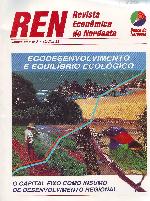PADRÕES DE CONVERGÊNCIA DA PRODUTIVIDADE DO TRABALHO ENTRE ESTADOS BRASILEIROS: UMA ANÁLISE DESAGREGADA PARA A INDÚSTRIA DE TRANSFORMAÇÃO
DOI:
https://doi.org/10.61673/ren.1998.2050Keywords:
Convergence, Productivity, Brazilian Transformation Industry, BrazilAbstract
This paper studies the convergence process of labor productivity in the Brazilian industrial sector and in twelve of its branches in the 1950-1985 period. With this purpose the Barro e Sala-i-Martin (1990) growth model was used since it estimates β and σ convergence. The results do indicate the existence of both types of convergence only for the sector as a whole and for Non-Metallic Minerals, Food Products, Beverages and Printing Industries. These results show that the industrial development process does not follow a long run path of dimini-shing regional labor productivity differences among states for a given industrial sector. To have a better understanding of the convergence process, an alternative methodology proposed by Quah (1996), which provides a more detailed view of the transitional dynamics of productivity, was used. From this alternative point of view it can be concluded that even in the cases where convergence was found, there is an almost invariable pattern of cluster or convergence club formation. This finding points out the presence of a complex trajectory of industrial development where within-cluster convergence, inter-cluster convergence and inter-cluster divergence are present.








